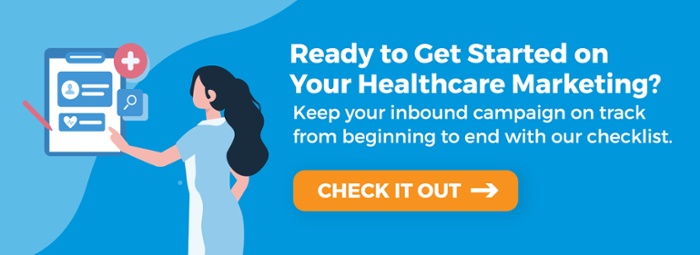
B2B Healthcare Marketing Trends For 2023
Patrick Dodge
Founder
B2B healthcare marketing has changed a lot in a few short months. From AI to revenue operations -- things have been changing at a breakneck pace and it's not likely to slow down soon.
Here are a few tidbits you can use to freshen up your marketing strategy for reaching healthcare professionals.
AI Generated Content
There is no way to talk about marketing in 2023 without a discussion about the giant leaps forward (or backward) we've taken with AI.
ChatGPT and other apps are creating coherent articles, social media posts, and other content types with just a few filtering instructions from the user. This has raised many ethical concerns from the community about plagiarism and the eventual displacement of skilled content marketers.
I can only speak to our own experience with this technology. It is useful, but requires editing and supplementation of human-generated content if you have high standards for quality.
ChatGPT is an indispensable tool for fast research on topics, providing outlines you can fill in with content from your own SMEs or with more AI-driven content.
My advice is to wade in slowly, and fact-check everything it writes for you. At this point, human + AI is likely the best approach to content creation.
Content About Pricing

It amazes me how many brands still avoid publishing content about cost, and during a tough economy no less.
Pricing is the most important information you can share to help people determine if they are a good fit for your company.
In most cases, brands don’t discuss price on their blog because they are afraid of competitors seeing it or because the answer “depends” and they would rather have the discussion on the phone.
This is a mistake, especially in an uncertain economic environment.
Healthcare professionals are busy people, just like you and me. Why would you want to waste their time and yours by forcing them to the phone to learn whether they can afford your services?
All buyers expect self-service capabilities when they are researching a solution to a problem – not just consumers. By teaching them about how your products and services are priced, you will not only maintain a much more efficient sales process, you will also gain a lot of search traffic by publishing an answer to the number one question people research online.
Read More: How Healthcare Companies Will Use HubSpot to Succeed in 2023
Personalized Communication
Personalization has been a buzzword for years, but it's becoming increasingly important in healthcare marketing.
Companies that can provide personalized experiences to healthcare professionals are likely to see more success in today’s world. Use buyer persona research to understand the unique priorities practitioners and other healthcare practitioners have when shopping for a solution like yours, and make sure you speak directly to those priorities in your content.
- What challenges make healthcare practitioners abandon the status quo and start looking for a solution like yours?
- Where do they go first to look for possible solutions?
- What personal or professional outcomes do they expect from a solution?
- What criteria do they use to disqualify certain solutions as “not a good fit?”
- What features or benefits of a solution are most important to them?
Most companies think they know the answers to these questions, but it’s all based on guesswork unless they’ve completed a real persona research study using unscripted interviews.
After doing about a dozen of these research projects, I can tell you that almost every company is making inaccurate assumptions about number five (above).
The features companies tend to promote the most about their services are often less important to healthcare workers than other aspects of the solution.
Once you know how buyers think and behave during the process, you can use these insights to structure a much more targeted content strategy and use it to personalize your campaigns:
Smart features – HubSpot and some other marketing platforms integrated with a CRM enable you to deliver personalized messages on landing pages, calls-to-action, and other assets based on their lifecycle stage in the buyer’s journey.
Email workflows – Personalization is a must when it comes to email marketing. Instead of sending “email blasts” to your entire database (which leads to increase unsubscribe rateds and spam reports), you can segment your buyers into small lists of shared attributes and behaviors. Writing your email copy in a way that speaks to those attributes can have an amazing impact on results.
"Healthcare professionals are busy people, just like you and me.
Why would you want to waste their time and yours by forcing them to the phone to learn whether they can afford your services?"
Account-Based Marketing
Sometimes referred to as ABM, Account-Based Marketing is a type of B2B marketing that targets companies that make the best fit and converts them into customers.
ABM is somewhat similar to inbound marketing -- the focus is on helping your ideal buyer by teaching them -- but instead of trying to attract these leads to your website using SEO and social media, you are seeking out your target accounts and presenting your message to them directly.
Account-based marketing requires Marketing and Sales to work closely with one another, prioritizing accounts as they engage and then nurturing them in a living pipeline.
As marketing costs rise, ABM can take your efforts to a new level of efficiency, but it requires a real investment in time and dedication, as well as the right tools.
Revenue Operations

As HubSpot points out, growth is not a funnel anymore – it’s a flywheel.
Instead of focusing only on attracting healthcare professionals and converting them into leads and customers, you should be equally focused on delivering an outstanding customer experience. This leads to word-of-mouth referrals, which keeps the flywheel and your growth momentum moving forward.
Also known as RevOps, Revenue Operations is the science of removing negative friction from the customer’s journey in the flywheel, while optimizing positive friction.
What does this look like in a practical sense?
Suppose most of your sales team takes an average of two hours to respond to a new customer inquiry, and their conversion rate of connect calls to discovery meetings is 50 percent.
This is an area where negative friction is standing in the way of a higher conversion rate. Adjusting the process to cut the average response time from two hours to five minutes could increase the conversion rate to 90 percent.
This is just one way you can optimize processes across every department in your organization – Marketing, Sales, and Service – and boost revenue outcomes without spending one extra dollar.
Direct Mail
What’s old is new again.
Healthcare marketers get bombarded with so many emails, ads, and pop-ups, it’s hard not to keep your message from “adding to the noise.” A brief departure from digital marketing to sprinkle in a message delivered through direct mail piece can be powerful.
Even though direct mail has a reputation for being expensive and hard to scale, it offer an innovative and disruptive break from the norm and make your brand stand out to healthcare professionals.
Before going down this road, it’s worth following a few guidelines:
- Make it personal! Like all other marketing today, you are wasting money if your direct mail doesn’t demonstrate you know something about your prospect and their challenges. Show that you’ve done your homework, and they are more likely to respond.
- Make it about them. Not all direct mail has to involve a glossy insert printed on heavy card stock. You can send almost anything, but don’t waste your time sending a collection of pens or a coffee mug with your company’s logo on it. That is self-serving and pointless. If you want to send something with a logo on it, make sure it’s theirs.
- Make it relevant. This is the moment to let your creativity shine. Don’t send a direct mail piece just for the sake of getting their attention. Earn their attention by making the experience interesting. I used to deliver “messages in a bottle” to prospects (tiny bottles that were meant to be wedding invitations), sending them an S.O.S. with a valuable tip I wanted to share with them. It worked. Bring your best creative people together for some brainstorming, and I'm sure they'll come up with great ideas.
It's an exciting time to work in healthcare marketing, and even a little scary. That's okay. The good news is that no matter how much technology changes our jobs -- and even encourages us to return to to analog tactics like direct mail -- a human-centered approach will continue to win customers.
Tech will always propel us forward into greater efficiencies and scalability, but it's the heart that counts. And if you lead with that, your brand will get noticed.
May 9, 2023 4:26:54 PM

